Do HEPA Filters Help with Cat Allergies? – A COMPLETE Guide

Cats are the perfect hunters that can jump, climb and poke their nose into any opening, and when they’re not moving about, cats are most often grooming themselves.
When grooming, cats spread out their saliva on their hair; when moving about, they spread their hair and dander all over the place.
It is this combination of cat saliva, hair, and dander that can trigger cat allergies and very strong reactions to the mere presence of cats.
Cat allergies are considered incurable but treatable. This means that we have plenty of tools to lessen that reaction and make the person’s life a bit less miserable around cats.
Thankfully, one of those tools are HEPA filters!
A HEPA filter is commonly found in air purifiers and humidifiers, where it filters the air intake and slows down mold growth inside the unit.
They do produce a cleaner air but how do HEPA filters help with cat allergies?
More...
What is a HEPA filter?
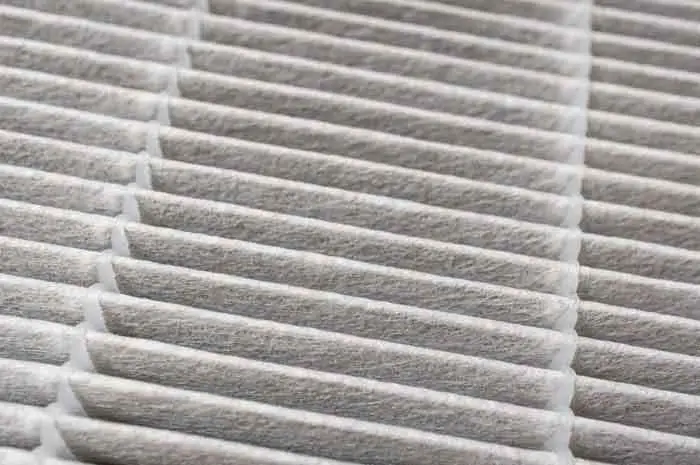
Firstly, we have to look at the HEPA filters.
As the name suggests, a High-Efficiency Particulate Arresting / HEPA filter is all about stopping particles in the air with high efficiency.
That is no marketing term, since all HEPA filters must be tested against the claim.
To be called HEPA, the tested filter must stop at least 99.97% of particles 0.3 microns and larger. This includes:
- Spores
- Mold
- Certain bacteria
- Car emissions
Im-pur-ressive stuff!
A HEPA filter is a web of synthetic fibers stretched across a frame; clean air can pass between the fibers but most of the pollution cannot.
HEPA filters are not meant to trap everything, but a large portion of what could be irritants or triggers for a cat allergy.
If other filters are combined with a HEPA filter, an even larger portion of pollution can be trapped.
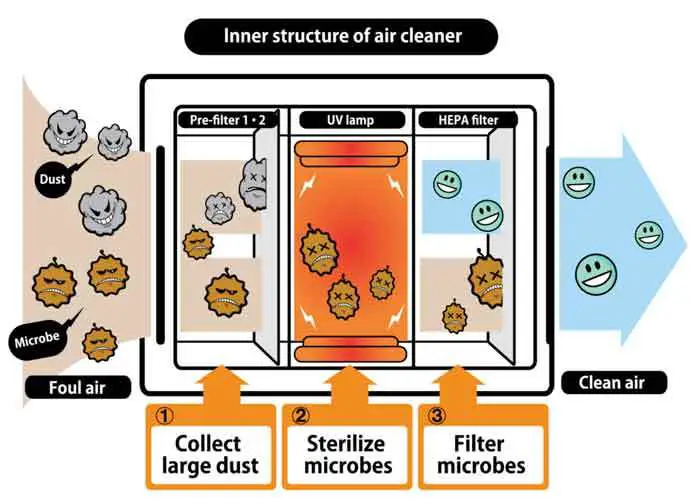
These include active carbon and UV lamps that help reduce the chance of triggering a cat allergy.
Cat allergies?!
Cat allergies occur when there is an overreaction of the immune system to something related to cats.
It can be cat urine, hair, saliva or dander that cause symptoms like having a cold.
Cat allergy symptoms are easily mistaken for the common cold: sneezing, runny nose and sniffling.
These symptoms can have different severity and can appear right when the allergic person enters the cat’s space, but that doesn’t always mean the cat is to blame.
Cat-related products can also cause an allergy that we then blame on the cat.
If there’s a certain product you use to clean after or care for your cat that gives you an allergic reaction, you might never suspect the real culprit.
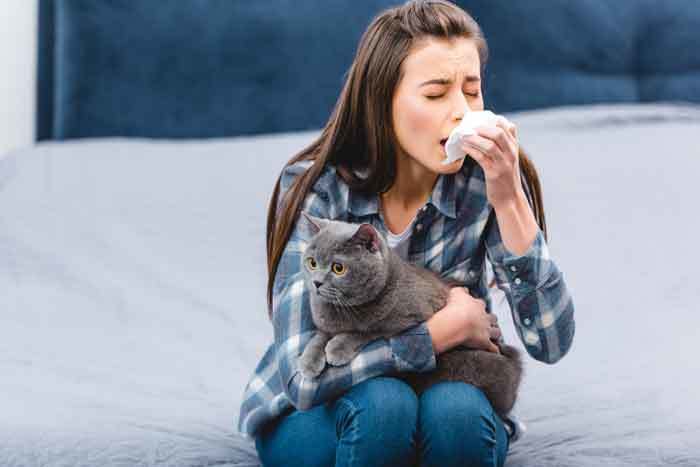
In the case of products, chemicals used in them can trigger an allergic reaction.
In the case of a cat allergy that’s caused by the cat, the real culprit are proteins contained in the cat’s urine, hair, saliva or dander.
For some reason, these proteins cause the immune system in allergic people to go haywire and provoke a severe reaction to what isn’t a life-threatening event.
Scientists believe it has something to do with childhood exposure to cat urine, hair, saliva or dander.
How do cat allergies come to be?
Allergies seem to usually start in the same way, beginning with childhood exposure to allergens that starts what doctors call an “atopic march”.
There are always the same symptoms in atopic march:
- Eczema
- Food allergy
- Hay fever
- Asthma

Eczema is skin rash caused by the allergen, in this case protein from cat urine, hair, saliva or dander.
Food allergies appear when some protein in the food similar to cat’s triggers the same reaction.
As for hay fever, it is a mild form of allergic reaction that can also be triggered by pollen.
Finally, asthma, is a full-blown reaction to an allergen that’s breathed in, with the medical term being “bronchial hyperreactivity”.
From eczema through to asthma, cat allergies follow the exact same pattern of an atopic march.
But, that doesn’t mean everyone near cats will eventually get cat allergy.
In fact, it seems exposure to cats may actually prevent the development of cat allergies.
In a 2019 Swedish study, 834 children were examined at birth and 13 years later to see if owning a cat prevented or caused allergies to them.
The remarkable result was that, if parents owned a cat during the child’s first year of life, the child had a lowered risk of having hay fever and a cat allergy later in life.
This would suggest that having cats around fortifies the child’s immune system against several allergens and lowers risk of, among other things, hay fever. Scientists did note that “more research is needed”.
So, already owning cats may reduce the development of cat allergies but how if one already had cat allergies?
Let’s tackle that question next.
Do HEPA filters help with cat allergies?
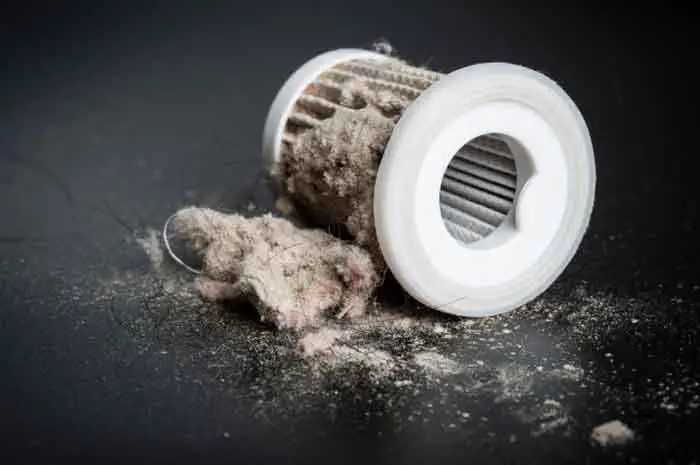
Three interesting studies tried to answer if and how much HEPA filters helped with cat proteins causing the allergy (also known as “Fel d 1”).
Study 1
In a 2009 study, 30 kids with asthma were split in two groups. The first group were given HEPA air filters and the second group paper sham filters.
During the 12 months, both groups were measured for bronchial hyperreactivity, the hallmark of asthma.
The study found that HEPA filters "had no significant effect” but “there seemed to be a trend toward improvement in bronchial hyperreactivity”.
This suggested that HEPA filters may help in preventing or delaying the development of allergies in younger children.
How about helping adults with cat allergies?
Study 2
In a 1997 study, 35 persons aged 23-60 with cat allergy who were already living with one or more cats had either a HEPA or charcoal pre-filter (considered placebo in the study), installed in their bedroom. The cat was not allowed to enter the bedroom at all during the study.
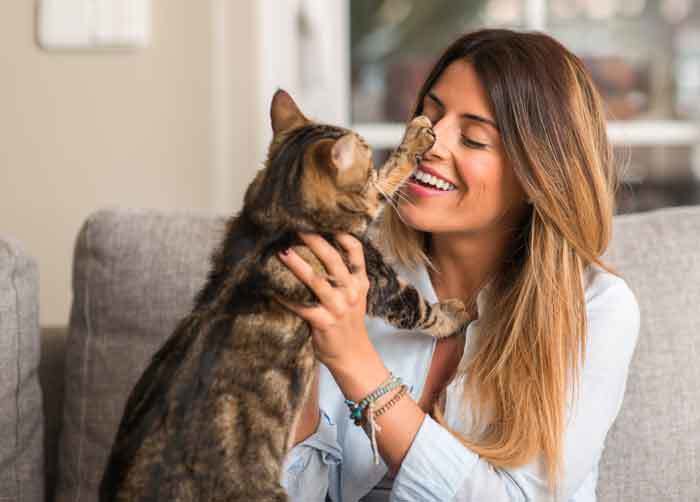
After three months, the result was that HEPA filter (Honeywell Envirocare 13503) and absence of cats did lower the amount of Fel d 1 floating in the air by about 40%, but “no significant effect on disease activity was detected”.
The study is aware of its biggest flaw – small sample size, noting that it would take 14,744 people analyzed in the same way to reach a solid conclusion.
Study 3
The third study was done in the UK in 1998, trying to answer how best to lower the amount of Fel d 1 in a home.
First, the study measured the amount of Fel d 1 in 50 homes with and 50 homes without a cat.
Homes with at least one cat had up to 314 times more Fel d 1 in carpets, furniture and mattresses but almost a third of homes without a cat had some Fel d 1 in the air.
Then, HEPA filters were installed and let to run for two weeks, during which cats weren’t allowed to enter.
Installing a HEPA filter did reduce the amount of Fel d 1 in the air but particles smaller than 4.7 microns, ones that can enter lungs and cause irritation, were the least affected and were found at 33% of their non-HEPA filter value.
So what does this mean?

When all three studies are taken together, this suggests that HEPA filters do help with cat allergies by reducing the amount of allergy causing cat proteins in the air.
While they do not provide relief for ongoing allergic symptoms, they do help to prevent and reduce these symptoms by removing the triggers from our environment.
Out of the three, the UK study was the most substantial, though keep in mind that all three studies have a modest sample size, which limits the conclusion we can draw from them.
Home remedies for cat allergies
Study 3 suggests removing the cat from the house but, if it must be indoors, that it be kept outside the bedroom.
This seems a sound advice, one that was partly tested in the study 2 – those with cat allergies seemed to suffer the most at night, when symptoms woke them up.
If the cat can’t be removed from the bedroom or house, then the problem can be snipped in the bud by castrating the cat.
The UK study notes that “castration of 1.5–2 year old male cats results in a 3–5-fold reduction in the level of Fel d 1”.
Another way to reduce the amount of Fel d 1 in the air is to regularly wash the cat.
Conclusion: Do HEPA Filters Help with Cat Allergies?

Allergies are tricky beasts, just like cats. We have no idea when they’re about to spring up but we can study them in action and try to figure out.
The studies we examined suggest that HEPA filters do help with cat allergies!
They reduce the amount of allergy causing cat proteins (Fel d 1) in the house, and while they do not provide immediate relief with ongoing allergic symptoms, they do help to prevent and reduce these symptoms by removing the triggers from our environment.
Superstitious people used to blame cats for everything but this time around, it’s really not their fault.
Related: Best Affordable Air Purifier for Pet Dander.
